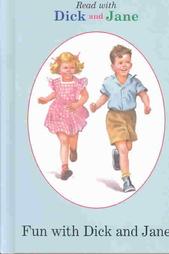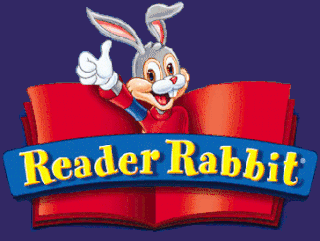
Whole language is a philosophy of reading and a discredited educational method originally developed for teaching literacy in English to young children. The method became a major model for education in the United States, Canada, New Zealand, and Great Britain in the 1980s and 1990s, despite there being no scientific support for the method's effectiveness. It is based on the premise that learning to read English comes naturally to humans, especially young children, in the same way that learning to speak develops naturally.

Phonics is a method for teaching people how to read and write an alphabetic language. It is done by demonstrating the relationship between the sounds of the spoken language (phonemes), and the letters or groups of letters (graphemes) or syllables of the written language. In English, this is also known as the alphabetic principle or the alphabetic code.

In contemporary education, mathematics education—known in Europe as the didactics or pedagogy of mathematics—is the practice of teaching, learning, and carrying out scholarly research into the transfer of mathematical knowledge.

New Mathematics or New Math was a dramatic but temporary change in the way mathematics was taught in American grade schools, and to a lesser extent in European countries and elsewhere, during the 1950s–1970s. Curriculum topics and teaching practices were changed in the U.S. shortly after the Sputnik crisis. The goal was to boost students' science education and mathematical skills to compete with Soviet engineers, reputedly highly skilled mathematicians.

Dick and Jane are the two main characters created by Zerna Sharp for a series of basal readers written by William S. Gray to teach children to read. The characters first appeared in the Elson-Gray Readers in 1930 and continued in a subsequent series of books through the final version in 1965. These readers were used in classrooms in the United States and in other English-speaking countries for nearly four decades, reaching the height of their popularity in the 1950s, when 80 percent of first-grade students in the United States used them. Although the Dick and Jane series of primers continued to be sold until 1973 and remained in use in some classrooms throughout the 1970s, they were replaced with other reading texts by the 1980s and gradually disappeared from school curricula. The Dick and Jane series were known for their simple narrative text and watercolor illustrations. Despite the criticisms of the stereotypical content that depicted white, middle-class Americans and the whole-word (look-say) method of teaching reading on which these readers are based, the characters of "Dick", "Jane", and their younger sister, "Sally", became household words. The Dick and Jane primers have also become icons of mid-century American culture and collectors' items.

Synthetic phonics, also known as blended phonics or inductive phonics, is a method of teaching English reading which first teaches the letter sounds and then builds up to blending these sounds together to achieve full pronunciation of whole words.
An open classroom is a student-centered learning space design format which first became popular in North America in the late 1960s and 1970s, with a re-emergence in the early 21st century.
Saxon math, developed by John Saxon (1923–1996), is a teaching method for incremental learning of mathematics created in the 1980s. It involves teaching a new mathematical concept every day and constantly reviewing old concepts. Early editions were deprecated for providing very few opportunities to practice the new material before plunging into a review of all previous material. Newer editions typically split the day's work evenly between practicing the new material and reviewing old material. It uses a steady review of all previous material, with a focus on students who struggle with retaining the math they previously learned. However, it has sometimes been criticized for its heavy emphasis on rote rather than conceptual learning.
A common school was a public school in the United States during the 19th century. Horace Mann (1796–1859) was a strong advocate for public education and the common school. In 1837, the state of Massachusetts appointed Mann as the first secretary of the State Board of Education where he began a revival of common school education, the effects of which extended throughout America during the 19th century.
Inventive spelling is the use of unconventional spellings of words.

Reader Rabbit is an educational game franchise created in 1984 by The Learning Company. The series is aimed at children from infancy to the age of nine. In 1998, a spiritual successor series called The ClueFinders was released for older students aged seven to twelve.

According to the alphabetic principle, letters and combinations of letters are the symbols used to represent the speech sounds of a language based on systematic and predictable relationships between written letters, symbols, and spoken words. The alphabetic principle is the foundation of any alphabetic writing system. In the education field, it is known as the alphabetic code.
Direct Instruction (DI) is a term for the explicit teaching of a skill-set using lectures or demonstrations of the material to students. A particular subset of direct instruction, denoted by capitalization as Direct Instruction, refers to a specific example of the approach developed by Siegfried Engelmann and Wesley C. Becker. DI teaches by explicit instruction, in contrast to exploratory models such as inquiry-based learning. DI includes tutorials, participatory laboratory classes, discussion, recitation, seminars, workshops, observation, active learning, practicum, or internships. Model includes "I do" (instructor), "We do", "You do".
Diane McGuinness is a cognitive psychologist who has written extensively on sex differences, education, learning disabilities, and early reading instruction. She currently holds the title of Emeritus Professor of Psychology at the University of South Florida.

Reading is the process of taking in the sense or meaning of letters, symbols, etc., especially by sight or touch.

Evidence-based education (EBE) is the principle that education practices should be based on the best available scientific evidence, rather than tradition, personal judgement, or other influences. Evidence-based education is related to evidence-based teaching, evidence-based learning, and school effectiveness research. For example, research has shown that spaced repetition "leads to more robust memory formation than massed training does, which involves short or no intervals".
Center for the Collaborative Classroom is a nonprofit organization headquartered in Alameda, CA that was founded in 1980 by Eric Schaps. Collaborative Classroom develops and disseminates literacy and community-building programs for use in elementary schools, and literacy, mathematics, and science enrichment programs for use in after-school environments, as well as provides professional development services tailored to each program.

Smart Way Reading and Spelling is a commercial brand of reading instruction methodology and materials that was developed in 2001 by Bright Sky Learning.

MobyMax is an online education program used by grades K-8. MobyMax includes 27 subjects including math, reading, phonics, language, vocabulary, spelling, writing, science, social studies, preparations for state examinations and more. The program also provides classroom tools such as assessments and progress monitoring, and also offers games, badges, and contests for the students.
Innovations for Learning is a global nonprofit organization dedicated to improving the literacy of children attending under-resourced schools. It has stated it is grounded in the belief that learning to read is a basic civil right with the power to transform lives. Founded by Seth Weinberger in 1993, the philanthropically supported initiative has focused on beginning reading among the poorest children.